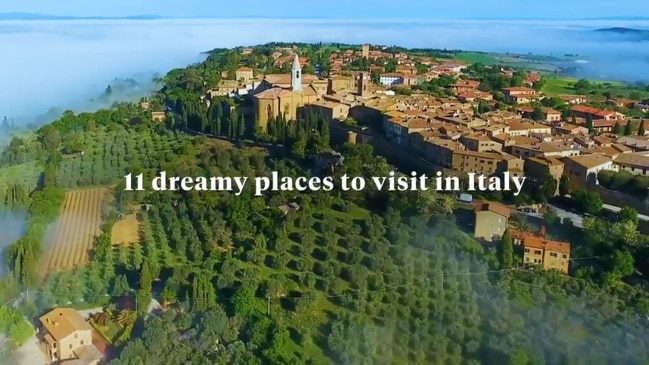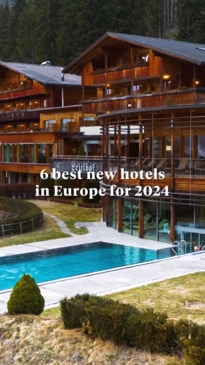Trieste sojourn had me walking in the footsteps of royalty
I discovered this fascinating port city on a hiking tour with a difference.

Lifestyle
Don't miss out on the headlines from Lifestyle. Followed categories will be added to My News.
Looking at the desk that faces a huge window framing the sparkling Adriatic Sea, I realise I’m slightly envious of Archduke Maximilian of Habsburg. In the early 1860s he’s said to have spent hours writing poetry here, spending his remaining time travelling and reading books from his enormous library. After serving as admiral in the Austrian navy, Maximilian – of the royal Habsburgs who ruled Austria, and a few other lands, from 1282 until 1918 – settled at his then spanking-new Miramare Castle with wife Princess Charlotte of Belgium and carved out a pretty sweet life (before an ill-fated decision to accept the role of emperor of Mexico ended in his execution in 1867).
Castello Miramare leans into the Gulf of Trieste from a promontory 10km from the city of Trieste – just sneaking inside Italy’s border with Slovenia. Over 20 rooms and halls are on show, complete with original furniture and art. Downstairs are the couple’s private apartments – Max wanted his bedroom to be a replica of his naval cabin, with low ceilings and wood-lined walls – while upstairs, official state rooms are richly decorated and strung with tapestries and paintings. It’s when I look out the castle’s many windows that I feel most connected with its original owners; times may have changed but the views haven’t.

Of Max’s 7000-plus books, spanning philosophy, religion, law, economics, art, history and sciences, botany forms the biggest section. Before he arrived, the promontory was almost barren but he got planting and created 22ha of formal gardens.
There’s something special about arriving on foot via the same roads and paths its original residents once used. I’m on an 11-day itinerary with Guided by Nature which pulls together epic day hikes from across Slovenia, Croatia and Italy, and while most have led us to alpine peaks or misty forests, a few have been chosen for their cultural insights.
Today’s walk started on an old Napoleonic road clinging to karst cliffs with panoramic sea views. Lunch in the little town of Prosecco-Contovello – the original home of Prosecco – was a deliciously buttery seafood ravioli with wine, then we descended via moss-covered cobblestone walkways into the “back garden” of Miramare.
The Habsburgs made quite a mark on this neighbourhood. On Trieste’s waterfront, the Savoia Excelsior Palace was built for the monarchy and touted as “the most important and luxurious hotel in the Austro-Hungarian Empire” on opening in 1911. For two nights, it accommodates me too. High ceilings, parquetry flooring and sheets embroidered with the hotel’s insignia retain its regal air.
I wander on to my room’s private terrace and feel like I’ve stepped back in time. Trieste is Central Europe’s most important port and a melting pot of cultures, and my view encompasses the action.
Citta Vecchia (Old City) is minutes away on foot, full of ornate and grand buildings, narrow alleyways, piazzas and a Grand Canal. At which of the many bars and cafes spilling onto the pavement I should dine is an agonising choice but I eventually settle on L’Antiquario and order a pasta carbonara. I had no idea it could taste so good.
Striking karst terrain has dominated our hikes so it’s especially interesting to visit Vilenica Cave, 20 minutes away, across the border in Slovenia, and another haunt of the Habsburgs, as well as Trieste’s tourists and sailors, since 1633. Tens of thousands of limestone caves lay beneath Italy and Slovenia but this is Europe’s oldest show cave.
“Vilenica was known as the most beautiful cave in the world. For me it still is. You decide,” says guide Alenka Scuka. We descend 72m, navigating 450m of passageways and huge chambers filled with caramel-coloured stalactites, stalagmites and flowstone. Alenka says this cave is “not so touristic” compared to others, maintaining a more natural feel. Before electricity, flame torches lit the way.
“The more visitors paid, the more torches they could have and the more of the system they saw,” says Alenka. “I don’t know how it was with the smoke but for sure the ashes stay here and are a reminder of the history of the cave and that we need to take better care of it now.”
For me, the cave’s rawness only strengthens the sense of history I’ve felt throughout my Trieste sojourn. Whether a cave, a castle or a hotel, I’m walking in Max’s footsteps.
The writer travelled as a guest of Guided by Nature.
What is the best hiking tour of Croatia, Italy and Slovenia?
Guided by Nature’s 11-day Croatia, Italy and Slovenia Hiking Journey costs $10,995 and includes premium accommodation, most meals (including wine), transport and guides. The tour starts in Ljubljana in Slovenia and ends in Rovinj, Croatia. Book flights into Ljubljana and out of Pula.
Originally published as Trieste sojourn had me walking in the footsteps of royalty


